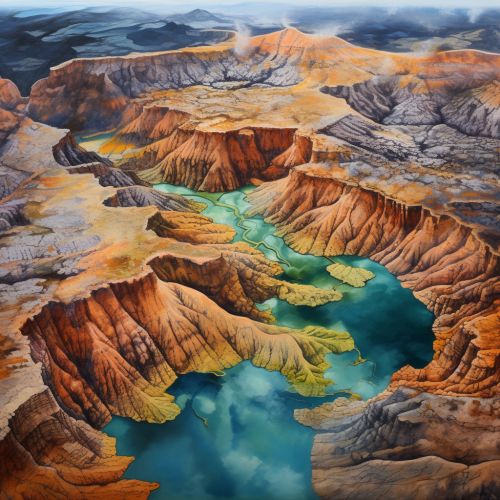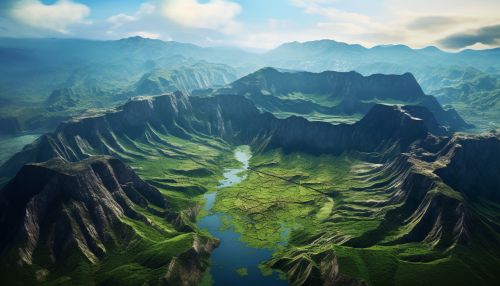Geology of the Yellowstone Caldera
Introduction
The Yellowstone Caldera, also known as the Yellowstone Supervolcano, is a volcanic caldera and supervolcano located in Yellowstone National Park in the United States. The caldera and most of the park are located in the northwest corner of Wyoming. The major features of the caldera measure about 34 by 45 miles (55 by 72 km).


Geological History
The Yellowstone Caldera has a complex geological history that spans millions of years. The current caldera was created by a cataclysmic eruption that occurred approximately 640,000 years ago, forming a crater nearly 45 miles (72 km) across. This event, known as the Lava Creek eruption, was one of three major eruptions that have occurred at Yellowstone, the other two being the Huckleberry Ridge eruption around 2.1 million years ago and the Mesa Falls eruption approximately 1.3 million years ago.
Volcanic Activity
Yellowstone is one of the most active volcanic systems in the world, with over 10,000 thermal features and more than 500 geysers. The park's geothermal activity is a result of ongoing volcanic activity beneath the Earth's surface. The heat powering the geysers, hot springs, fumaroles, and mud pots comes from the still-active magma chamber below the caldera.
Tectonic Setting
The Yellowstone Caldera lies over a hotspot where light, hot, molten mantle rock rises towards the surface. While the Yellowstone hotspot is now under the Yellowstone Plateau, it previously helped create the eastern Snake River Plain through a series of huge volcanic eruptions. The hotspot's apparent motion is to the east-northeast.
Hydrothermal Systems
The hydrothermal systems of Yellowstone are the visible expression of the immense Yellowstone volcano. They are among the park's most popular features. The hydrothermal systems are a result of the underlying volcanic activity and the presence of a partially molten magma chamber.
Future Eruptions
The potential for future eruptions at the Yellowstone Caldera, while currently low, is a topic of ongoing research. Scientists continue to monitor the Yellowstone volcano closely for signs of unrest that could indicate a future eruption.
